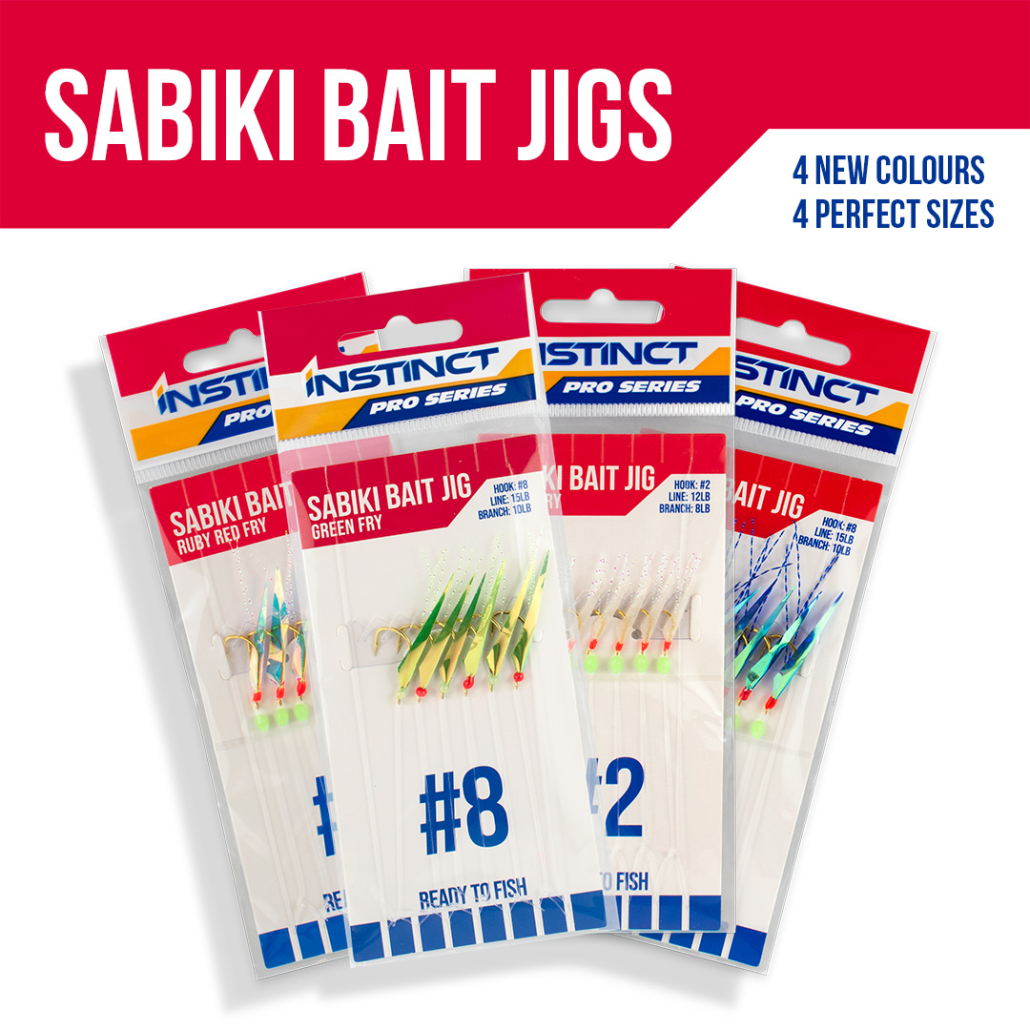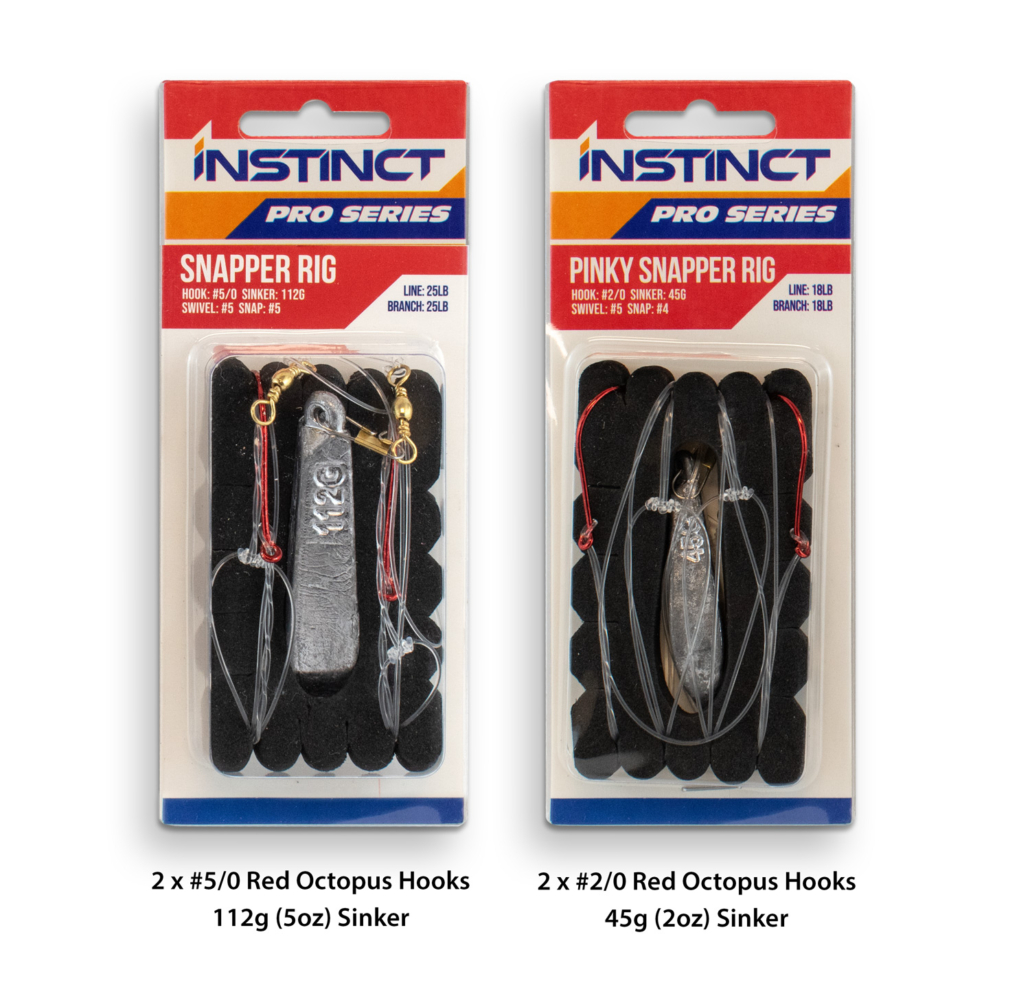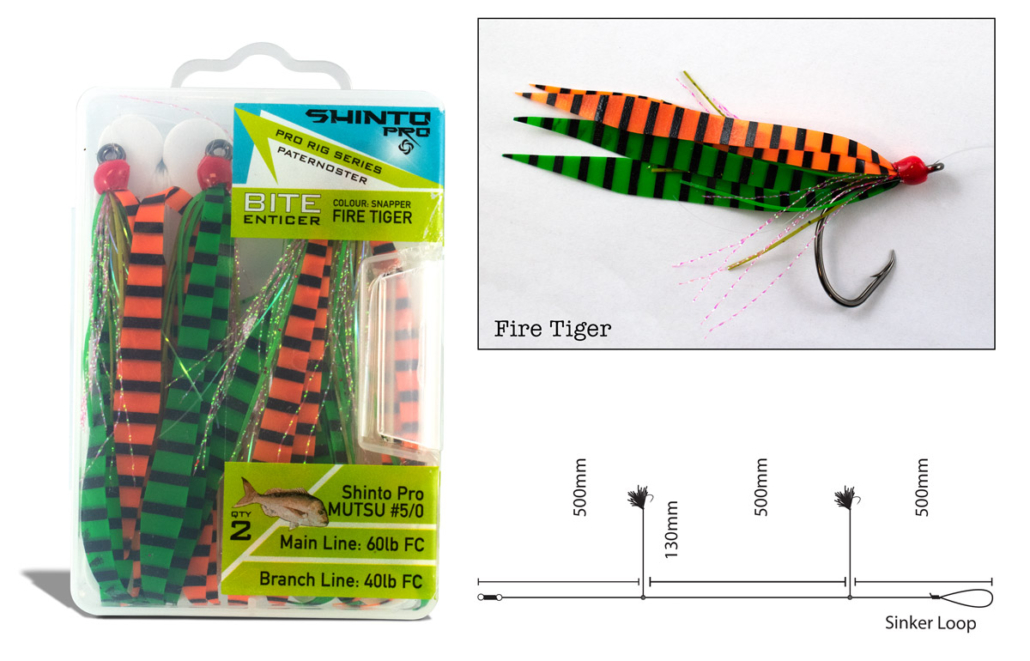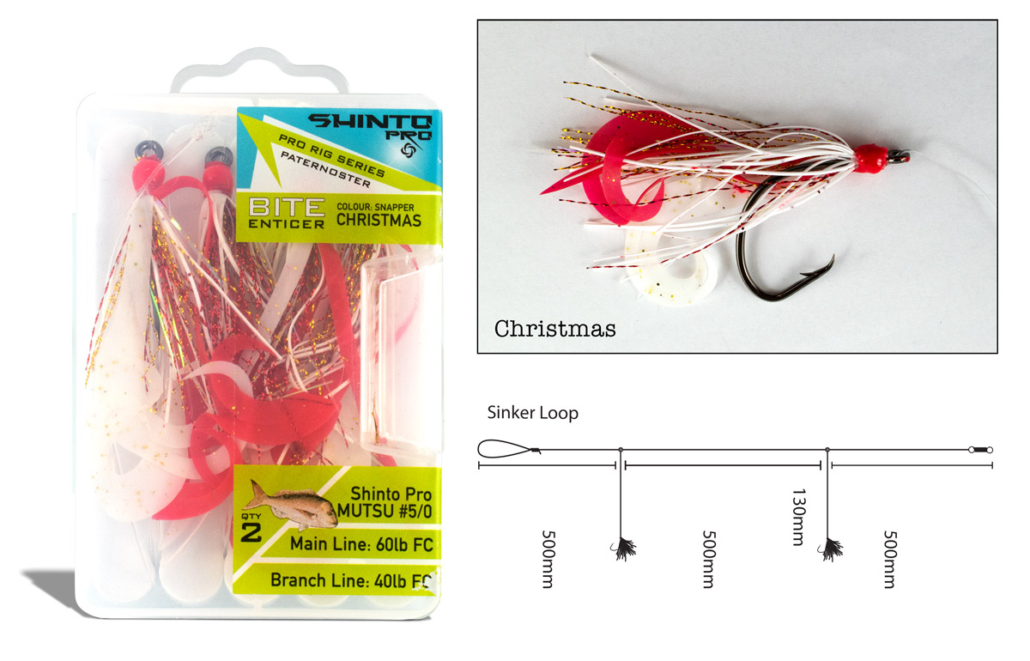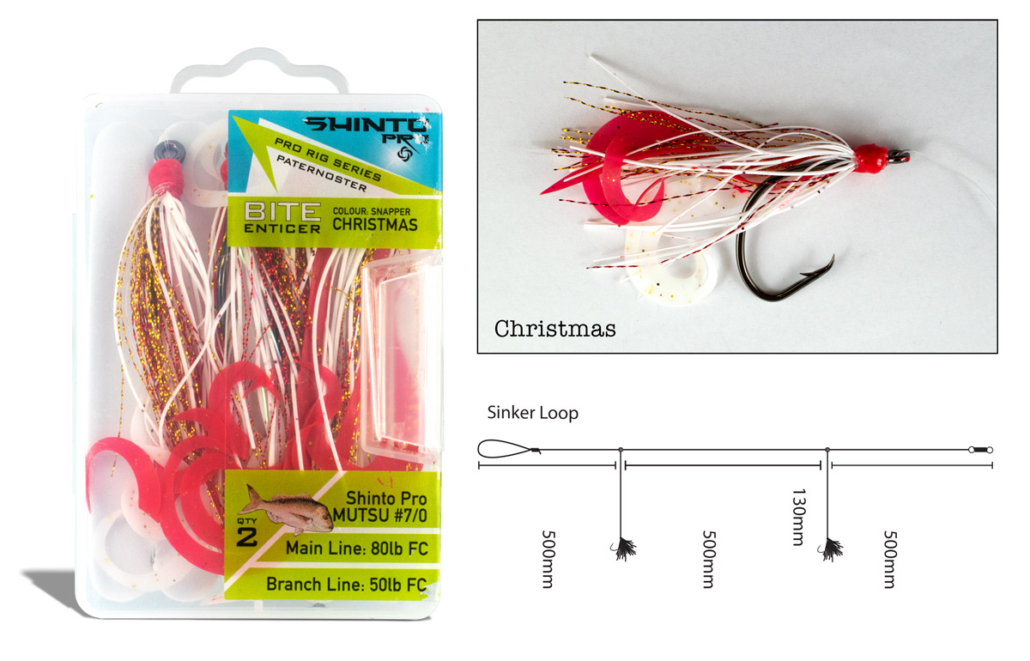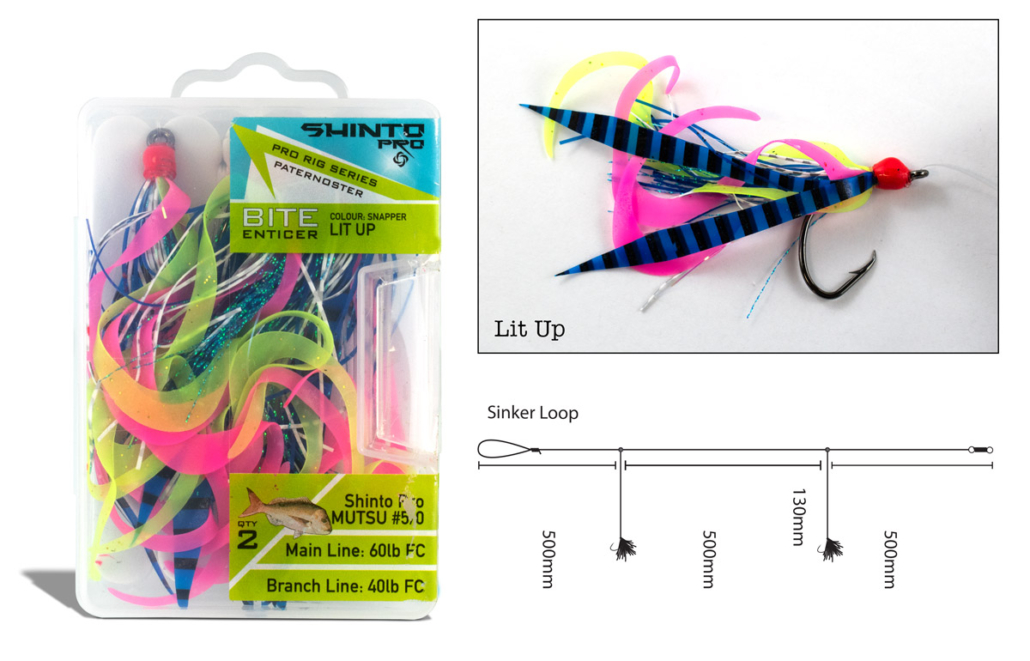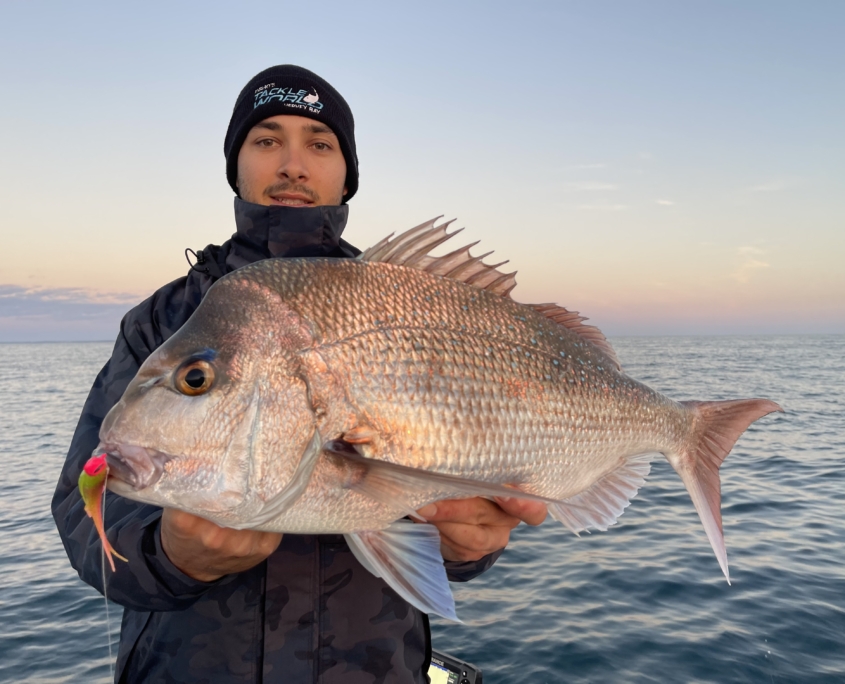Snapper Species Guide: Where to find snapper and the gear you’ll need
Snapper are a highly sought-after target in Aussie waters and for good reason! They’re prized for their hard fight and tasty flesh – they also release well. If you’re relatively new to fishing or are still perfecting the art of catching snapper, this guide will give you the info you need to succeed.
WHERE TO FIND ‘EM
Snapper are one of the most widespread species in Australia and although they are not common in the most northern tropical waters, they have been found in deep water as far north as Innisfail, FNQ and are also found in Exmouth, WA from time to time, You’ll find them in and around:
- Rocky reefs
- Wrecks
- Seagrass beds with structure like coffee rock
- Any location holding bait
They’re most commonly found in the depths of between 15 to 25 metres in larger bays, however, they can be found anywhere from 5 to 120 metres. Many subtropical snapper move closer to shore in winter making them more accessible to shore based anglers and tinny fisherman. It’s important to listen to your local Tackle World fishing reports or come instore for updates on where the fish are as this constantly changes.
According to Will Lee at Tackle Tactics, “First light is a prime time to target snapper and they will generally bite well for the first half hour of light, once the sun hits the horizon. It pays to be at your location early to have the boat positioned and ready to go for this peak bite period.
Dusk is also a great time for snapper. One advantage to an afternoon snapper session is that you can allow yourself time to sound around the area and get set for the last hour of light when snapper tend to fire up.” and continue fishing into the night by drifting with livebaits. If you’re chasing live bait using the Instinct Pro Sabiki rigs don’t forget to drift a lightly weighted livey back down just in case the big boys are hanging around.
TECHNIQUES
Snapper, when on the bite, are less fussy and can be tempted by any of the following. However when the bite is slow, live bait tempts more fish.
- Live baits, such as yellowtail scad (Yakkas), slimy mackerel, legal sized salmon, legal whiting, garfish and of course; squid.
- Dead baits, such as pilchards, fish fillets like bonito, squid strips, and prawns
- Bite enticer or flasher rigs with bait strips
- Soft plastics & Jigs
If you’re planning on bait fishing, Jase from Fisho’s Tackle World Hervey Bay notes that “Big tides, burley (if there are no sharks) and locally-sourced baits are key. The bigger tides are key just about everywhere. It is a snapper thing. They roam – a lot. They also school up though and will attack baitfish schools in packs or join in the fray when their pelagic neighbours round them up.
WATCH BELOW – How Ash from Tackle World Miami prepares a burley bag
You can catch snapper on the bottom and right up through the water column. Their diet is expansive. Fish, squid, prawn, crab, shellfish. They will have a favourite of the day. More likely determined by their environment and what food source is most abundant.”
Snapper also frequently fall victim to a range of soft plastics, soft vibes, slow-pitch jigs, and octo jigs. Recommendations for those are below. According to the experts at Shimano, “when using soft plastics for snapper, be vigilant when allowing [your soft plastic] to sink to the bottom as a high percentage of bites will come on the drop. Once on the bottom, work your plastic back to the boat ensuring it is always in the bottom 3rd of the water depth.”
GET YOUR GEAR SORTED
If you fail to plan, you’ll miss the bite. Or something like that! What we’re trying to say is be prepared! Just as Will from Tackle Tactics says, “having multiple rod and reel outfits on board when chasing inshore snapper is certainly an advantage as bite periods generally come in short stints and there is nothing more frustrating than having to re-tie during a hot bite. ”
The gear you need to use for snapper fishing will depend on the size of the fish you are targeting and the type of water you are fishing in. As a guide, Jesse Rotin from Daiwa states can’t go wrong with “4-8kg rods paired with 3000–4000 reels. They’re perfect no matter where you fish without being an overkill.”
For small snapper, a light-action rod and reel with 10-15 pound test line will be sufficient. For larger snapper, a medium-action rod and reel with 20-30 pound test line will be needed.
Rods and Reels
Call into your local Tackle World store and ask them about the rod and reel combo best suited to how you want to target snapper. It all depends on whether you’re planning to go off the rocks, with liveys, bait from a boat, soft plastics, jigs etc. They will point you in the right direction and even tell you where to go and when. Local and current knowledge is crucial to your success!
Rigs
A great option we also recommend as part of your lineup is the Instinct Pro Snapper and Pinky Snapper rigs. These handy pre-tied rigs go well with dead and cut baits and are super easy to attach to your main line. The Pink Snapper Rig has 2 #2/0 red Octopus style hooks and a 45 gram sinker. The hooks are attached by handy dropper loops making them easy to replace and keeping your bait wafting in the current just off the bottom – just where the hungry snapper like to hang out. The Snapper Rig is the same just up-grade to #5/0 hooks and 112 gram sinker. Use these rigs for larger baits like crabs, whole squid and meaty slabs of tuna.
Soft Plastics
Where do we begin? There are dozens of soft plastic options suitable for Snapper. Here is what Tackle Tactics provide as a general guide:
Grub Tails – Plastics like the ZMan 2.5″ GrubZ and ZMan 3.5″ GrubZ are a very user friendly plastic for Snapper. This tail design works at ultra-slow speeds and starts to effectively fish from the time the plastic lands in the water. Grub tails made from the ZMan Elaztech, buoyant material are a great option when fishing a ‘lift and drop’ technique – when paused on the bottom, the tail will float up and move with the slightest bit of current or water movement.
Jerk Baits – ZMan do a range of ‘Jerk Bait’ style soft plastics, ranging from the tiny 3.75″ StreakZ right up to the big ZMan 8″ StreakZ XL. The ZMan 3.75″ StreakZ and ZMan 5″ Scented Jerk ShadZ are a great size for chasing inshore snapper, where the bait tends to be smaller. Snapper just love eating soft plastics on ‘the drop’ (when the plastic is sinking) and jerk bait style plastics when rigged dead straight on a light jighead have a gliding action that big snapper can’t resist.
Paddle Tails – With a fish shaped body and a ‘paddle tail’, plastics like the ZMan 3″ MinnowZ and ZMan 4″ PaddlerZ or the larger 5″ version have a super lively action and are a versatile option when targeting snapper in shallow water.
Jighead Selection
It pays to carry a wide variety of jigheads when fishing for snapper. Large snapper are regularly caught by bait fisherman using a technique called ‘float lining’, which involves using a lightly weighted sinker and large bait such as a slimy mackerel or pilchard. A similar technique can be used when targeting snapper with soft plastics, by keeping your jighead ultralight and allowing your soft plastic to naturally fall through the top half of the water column. This is a deadly technique for catching better than ‘average quality’ snapper on plastics.
If it is table fish that you’re after, using a heavier jighead will get you to the bottom quicker which is generally where you’ll find the majority of smaller fish.
It is also very important to match your jighead hook size to your soft plastic. As a general rule, the shank of the hook excluding the weight should be about a third of the length of your chosen soft plastic.
READY TO CAST?
That’s pretty much all you need to know to get started chasing Snapper. If you still have questions about how to catch this iconic sports fish in your own fishery, be sure to drop into your closest Tackle World where any of our local, independent fishing experts can provide you with more info and guidance. Find your store here.
NOTE: Always remain aware of the size and bag limits for snapper in your area and release any undersized or spawning snapper.


